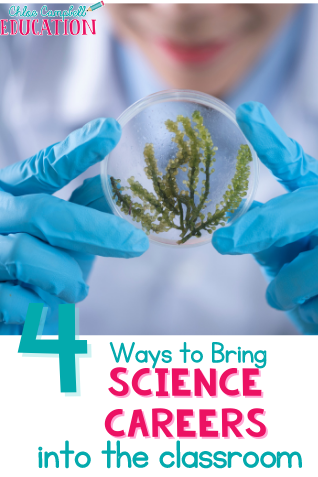The Best 4th Grade Science Experiments and Activities
As a 4th grade science teacher, I know how exciting it can be to get students engaged in hands-on learning. There’s nothing quite like seeing young scientists light up when they discover something new through experimentation. In this blog post, I’ll share some of the best 4th grade science experiments and activities that not only cover key science concepts but also keep your classroom buzzing with excitement.

Whether you’re teaching about speed, sound energy, electric currents, or rock formation, these experiments will be the perfect way to get your students fully involved. Plus, they all use simple supplies that are easy to gather, making them great for busy teachers!
1. 4th Grade Science Experiments: Hands-On Fun with Scientific Method Experiments
For a comprehensive approach to the scientific method, I developed 10 Fun Easy Science Experiments that you can use with your 4th graders. These activities guide students through the scientific method, offering hands-on experiments that encourage independent work while covering key 4th-grade science concepts. This is a perfect way to teach students how to follow procedures, record data, and draw conclusions, all while having fun with easy-to-set-up science activities.
All of these science experiments use common household items which makes them easy to prepare for. These fun and easy science experiments are perfect for introducing science lab rules, teaching science procedures, modeling the scientific method, or adding some scientific fun to any day of the year!
The 10 Science Experiments are:
- Which airplane design flies the farthest distance?
- Does the amount of air change the distance the balloon travels?
- Which soda reacts the most to Mentos?
- Which ramp design allows the ball to move the farthest distance?
- What liquid cleans pennies the best?
- Which liquid allows the gummy bears to grow the most?
- Exploding Baggies
- Marshmallow Catapults
- Apple Volcanoes
- Ice Cream in a Bag
2. Exploring Sound Waves with Rubber Bands
One of the coolest 4th grade science experiments is using rubber bands to explore sound energy. All you need are a few rubber bands of different sizes and thicknesses, and your students will be able to see (and hear!) how different vibrations create different pitches of sound. This simple experiment is a great way to teach sound waves and energy transfer. It’s hands-on, easy to set up, and really fun for fourth graders.
If you want this experiment done for you, plus get access to two other experiments for sound, I’ve got them ready for you in my Sound Energy resource.
3. Speed and Collisions: The Ping-Pong Ball Race
This experiment is an exciting way for students to understand speed and collisions. Use a ping-pong ball, a ramp (you can use books), and different materials like paper towels or foil to see how surface affects the speed of the ball. You can even add in rubber bands to test how different tensions influence speed!
Next, have students roll ping pong balls at one another. The goal of this is for the ping pong balls to collide with one another. Have students hypothesize what they think will happen when the ping pong balls collide. Were the ping pong balls going the same speed? Different speeds? Did they hit each other head-on, or at an angle? This is a fun science experiment that helps students grasp the idea of speed and kinetic energy.
4. States of Matter with Ice Cube Melting
Teaching about the states of matter can be interactive with this simple science experiment. Give students an ice cube, a glass jar, and a paper towel, and let them observe how an ice cube melts over time. You can talk about energy transfer and how heat energy causes a solid (ice) to turn into a liquid (water). It’s a fun way for students to see the concepts of physical science in action.
If you want to make this learning even deeper, you can challenge your students to design a way to prevent the ice cube from melting. This helps students understand how to slow down changes in states of matter, and it’s also a great connection for learning about insulation.
5. Static Electricity with Balloons
Another favorite among 4th grade science experiments is exploring static electricity. Grab a few balloons and let your students rub them on different materials to see what creates the most static charge. This fun experiment is great for teaching about electric currents and static electricity—plus, it’s guaranteed to get lots of laughs as students see how their hair stands on end!
If you want this experiment done for you, plus get access to two other investigations, I’ve got them ready for you in my Static Electricity resource.
6. Rock and Soil Formation with a DIY Erosion Experiment
To cover earth sciences, try this fun activity where students can observe soil erosion. You’ll need plastic bottles, some soil, and water to simulate the effects of water on different types of soil. This experiment ties into lessons about weathering and erosion, and it gives students a better understanding of how rocks and soil change over time. It’s an interactive way to bring earth science concepts to life.
- As the water runs down the slope of the soil, students will see how the soil starts to move. Encourage them to closely observe what happens—does the soil stay in place, or does it start to wash away?
- Cut plastic bottles in half horizontally. Each half will represent a hill. Make sure you have one bottle for each group of students.
- Fill the bottle halves with soil, leaving a little space at the top.
- Instruct each group of students to use a plastic cup with holes poked in the bottom or a spray bottle to simulate rainfall. Have them gently pour water over their “hill” (the soil-filled bottle) to see how water affects the soil.
- You can also have students vary the intensity of the water: some can pour a light drizzle, while others can pour faster to simulate heavier rain. This will show how different amounts of water impact soil erosion.
7. Chemical Reactions: Baking Soda and Vinegar Volcano
No list of 4th grade science experiments would be complete without a classic baking soda and vinegar experiment. This experiment demonstrates a chemical reaction and can be turned into a mini volcano. Mix baking soda and vinegar in a plastic bottle, and let your students watch the fizzing reaction occur. It’s a great way to introduce the scientific method while exploring the properties of different substances.
8. Energy Conversion with Glow Sticks
If you want to teach about energy conversion, glow sticks are a perfect tool! Simply snap the sticks to activate the chemical reaction, then discuss how the stored energy in the glow stick is converted to light energy. This cool experiment not only helps students understand energy but also is a great project to discuss how light energy works.
You can even turn this learning into another experiment where students determine what temperature of water makes glow sticks glow brighter, glow longer, and more. You can find this experiment ready to go for you in my Halloween Science Activities resource.
These 4th grade science experiments are a fantastic way to spark curiosity and excitement in your students. From exploring sound waves to witnessing chemical reactions, these activities provide a variety of learning experiences that cover essential topics like energy transfer, states of matter, and more. The best way to teach science is through exploration, and these experiments are the perfect way to bring the wonder of science into your classroom.
So go ahead, gather your supplies, and let your students dive into these fun kids’ science experiments!
Looking for more experiments?
Check out my Easy Science Experiments Bundle, which includes access to 60+ experiments!
Don’t have time to digest all of this information right now? Want to save these experiments for later? No worries! Click the picture below to pin this to your favorite Pinterest board!











